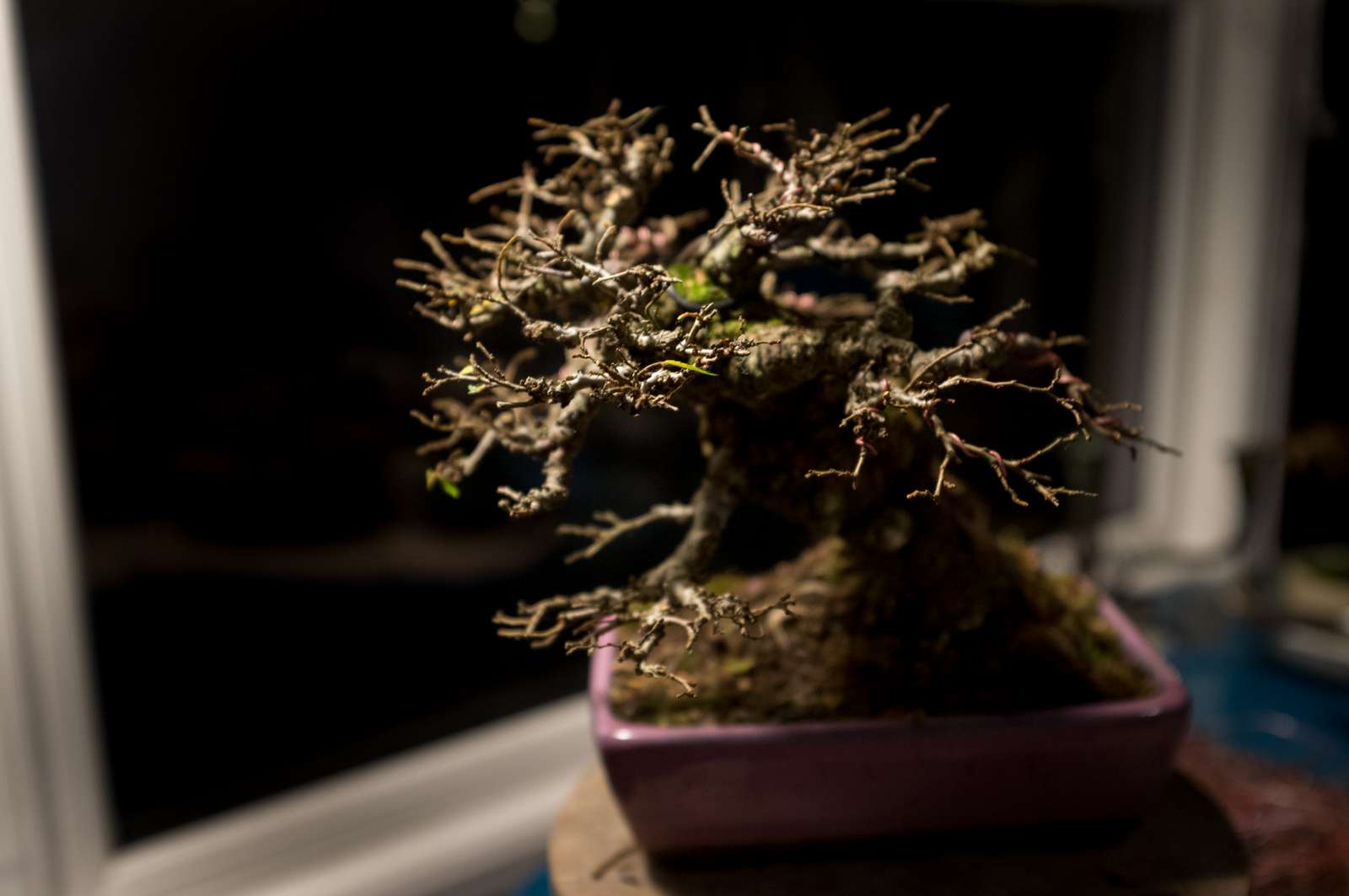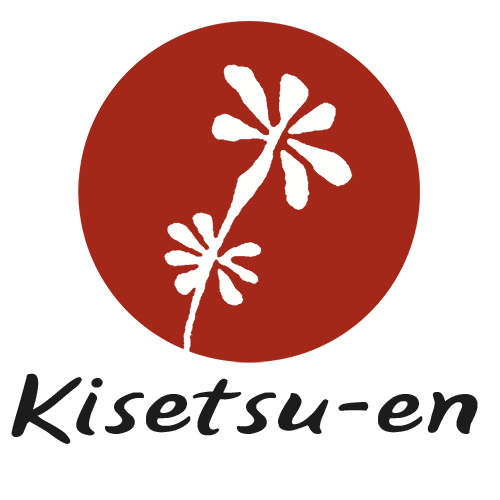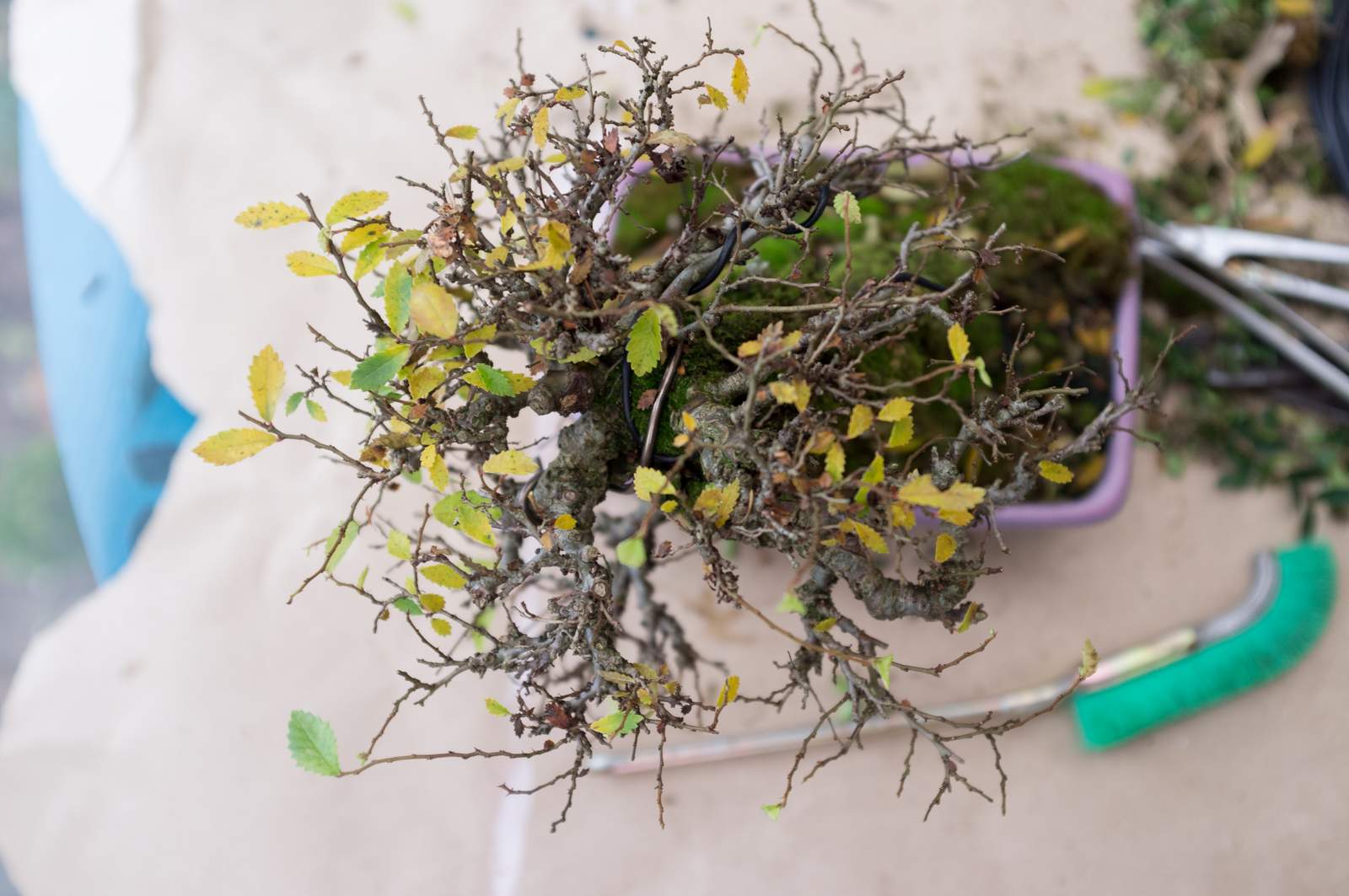
Ulmus parvifolia ‘Corticosa’
Bought as rough material in 2005. Sort of broom style or just overgrown raw stock.
Cheap material at that time, but I have noticed much higher prices today. Elm is a magnificent material for bonsai growing. Very forgiving to hard pruning, easy to wire, and easy to grow.
This one was a bargain and so much more fun to develop it into something cool within years.
The speedy growth of Ulmus does get you faster results than with many other kinds of trees or shrubs.
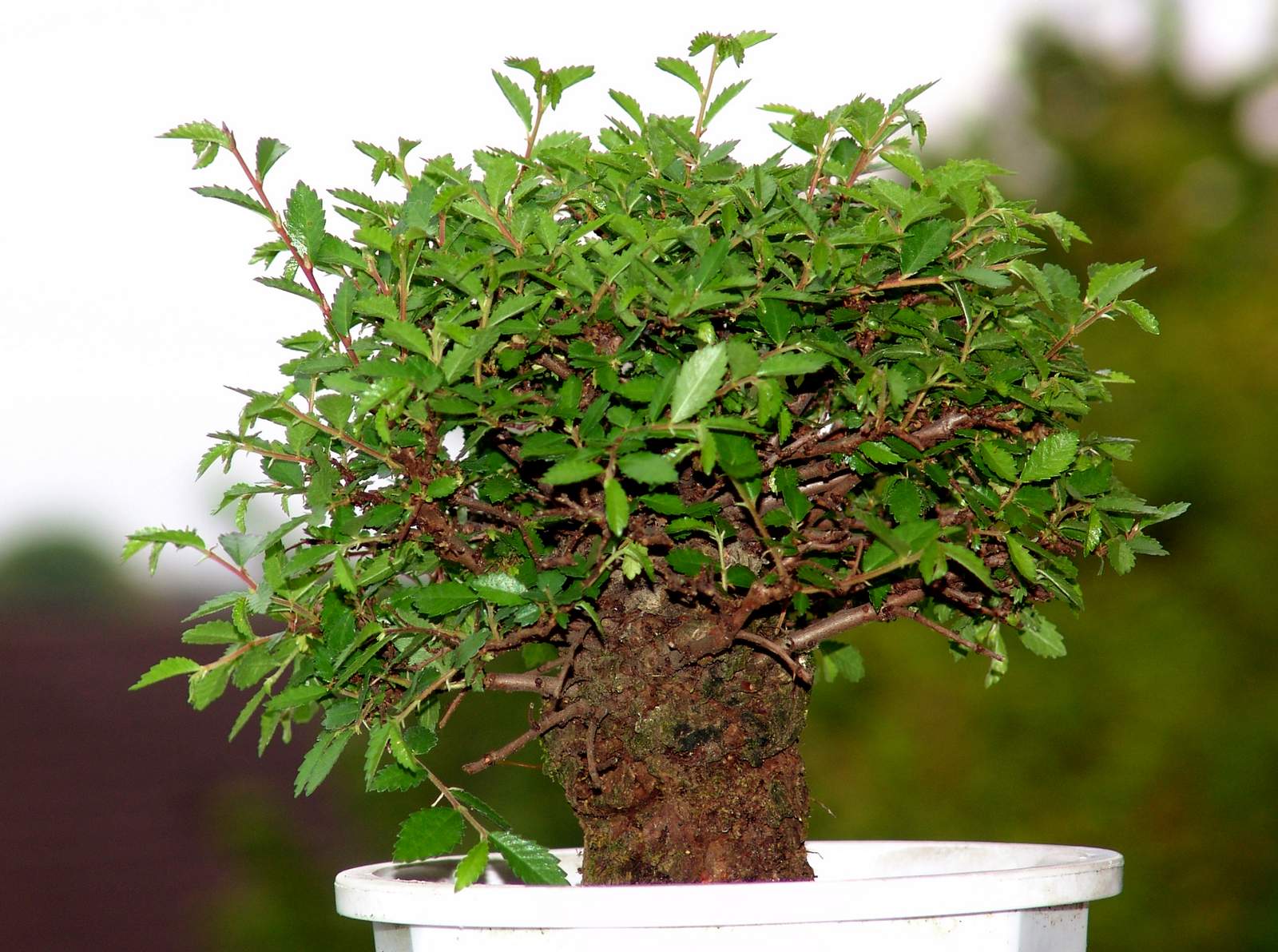
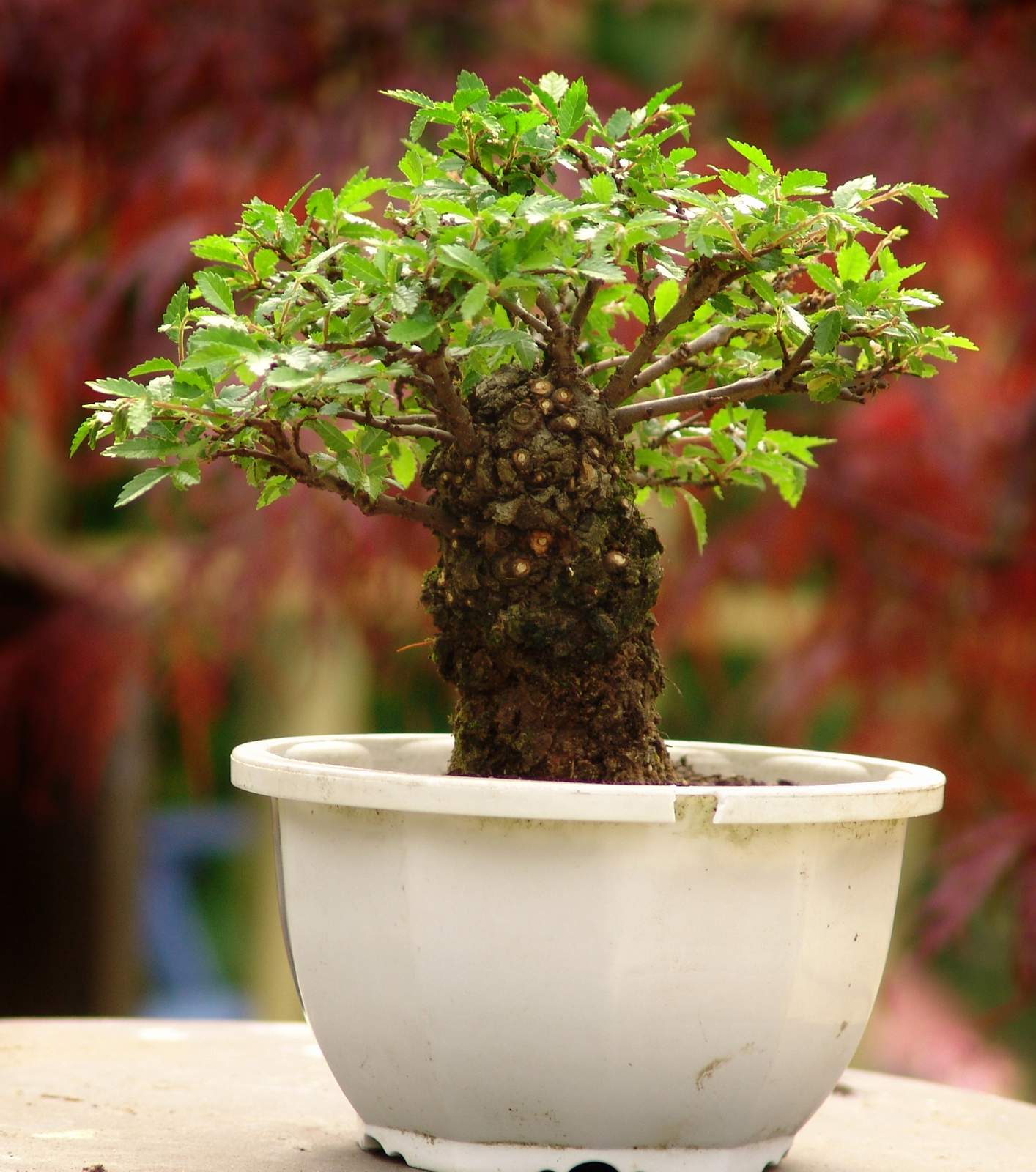
The trunk had one problem. It is the same thickness all the way from the surface to the top. In bonsai, it is preferred to have a decreasing thickness of the trunk up to the apex. Simply because it visually makes trees look larger than they are, and more natural because this is how they look in nature.
The thickest part is generally at the bottom where the tree has been growing for a long time that the newer at the top part.
First I did was remove some of the many small branches around the trunk. A mistake to some extent, because I could have used them for better low-branch placement. But the tree is forgiving and I have been able to grow new ones later. Learning not to be too hasty when pruning and thinking ahead.
An initial styling was done in 2005, and the first branches were arranged for future design.
The first styling often is a rough sketch because as the tree develops new possibilities arise. Especially when you are not very trained it can be difficult to predict what happens in a few years of growing.
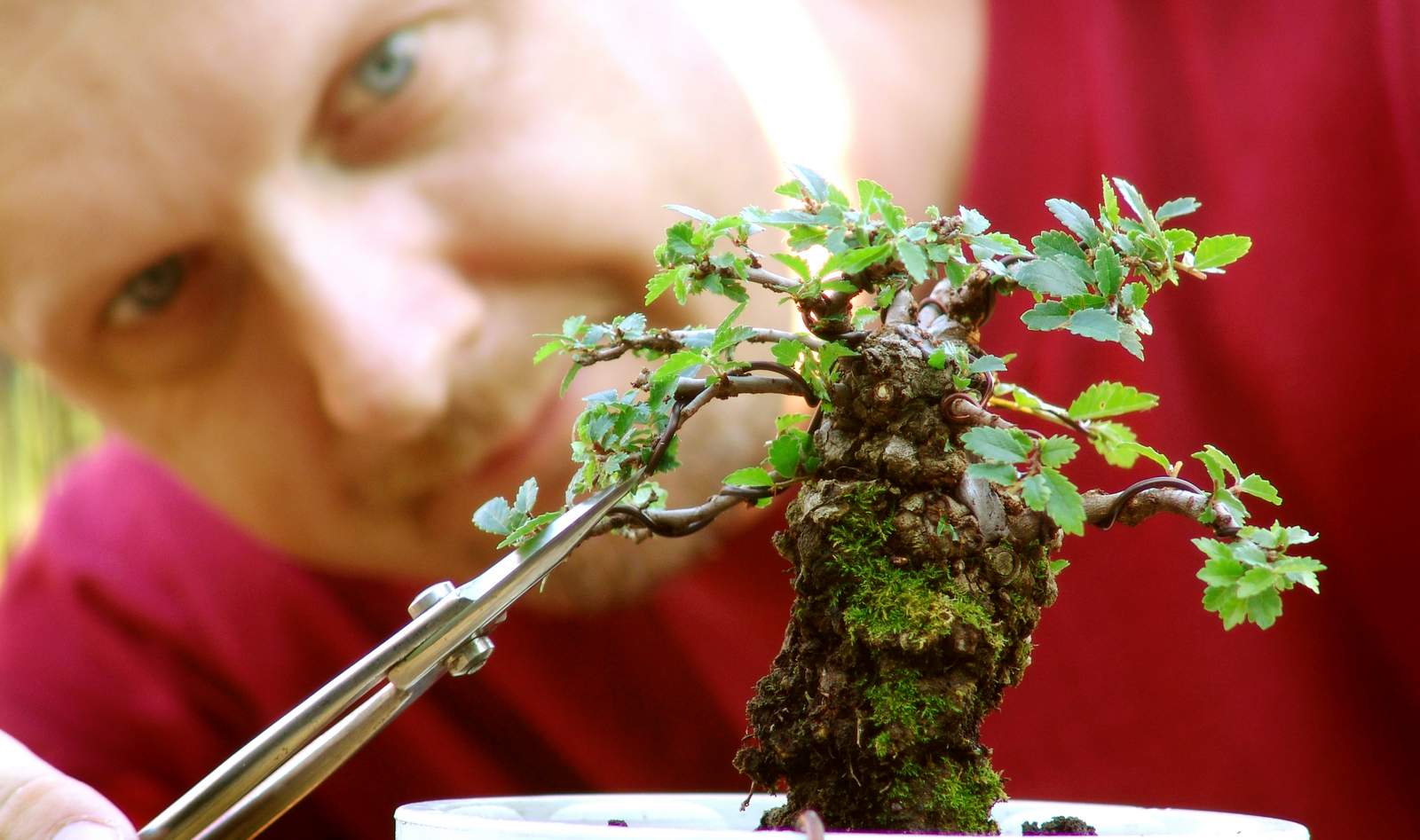
The uniform trunk needed to be taken care of. So I decided to carve some of the upper parts so it was reduced in thickness.
Cork Bark Elms have very soft wood so it was easily done, and they do heal over very well too.
The bark is a bit soft when young and filled with gaps and cracks. This makes mosses grow very easily and should be taken care of.
If mosses are allowed to stay on for a longer period they will attract moisture with the risk of the bark rotting away. Or – even worse – make the tree air layer itself push new roots at awkward positions.
An old soft toothbrush is used to gently remove the mosses.
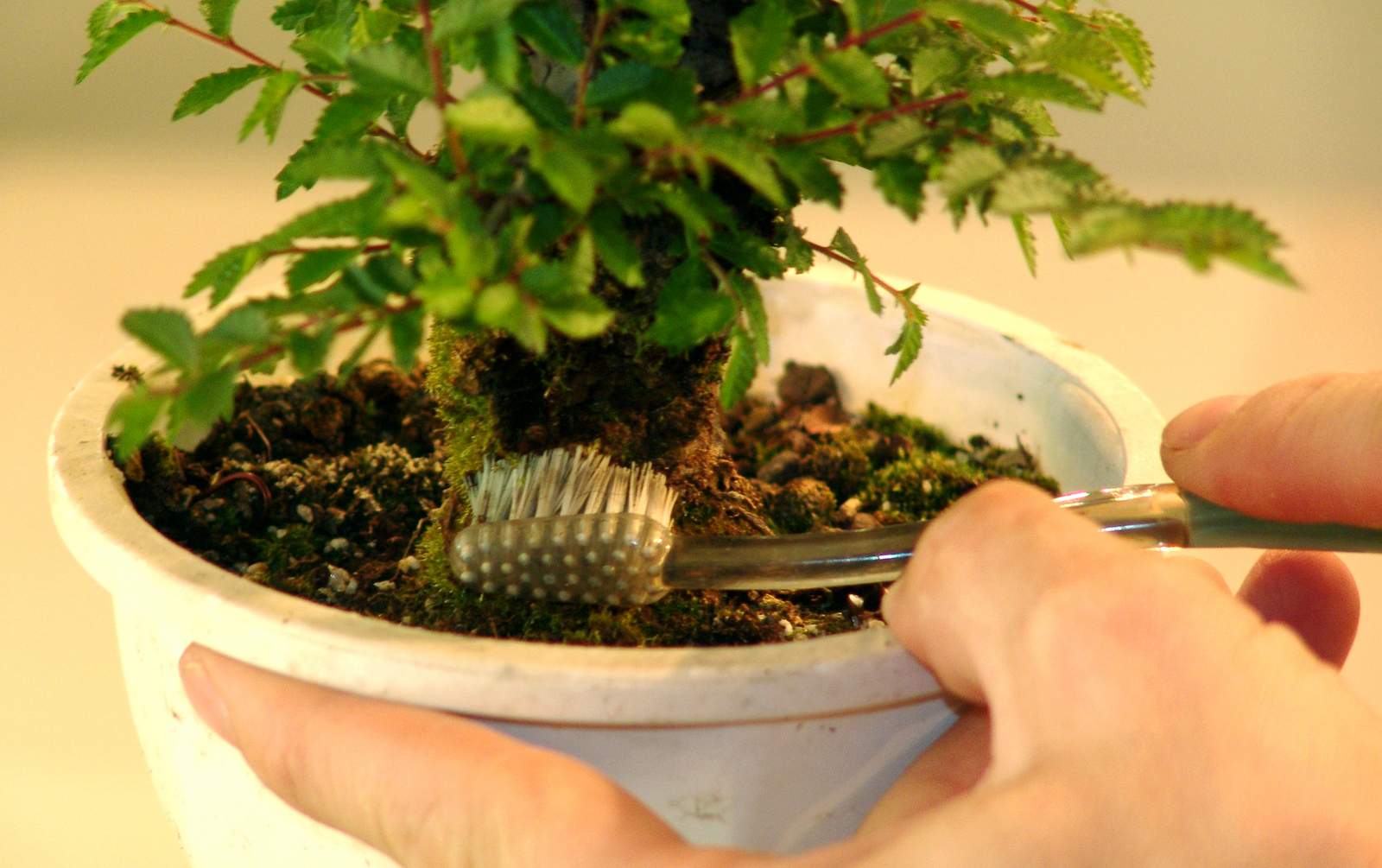
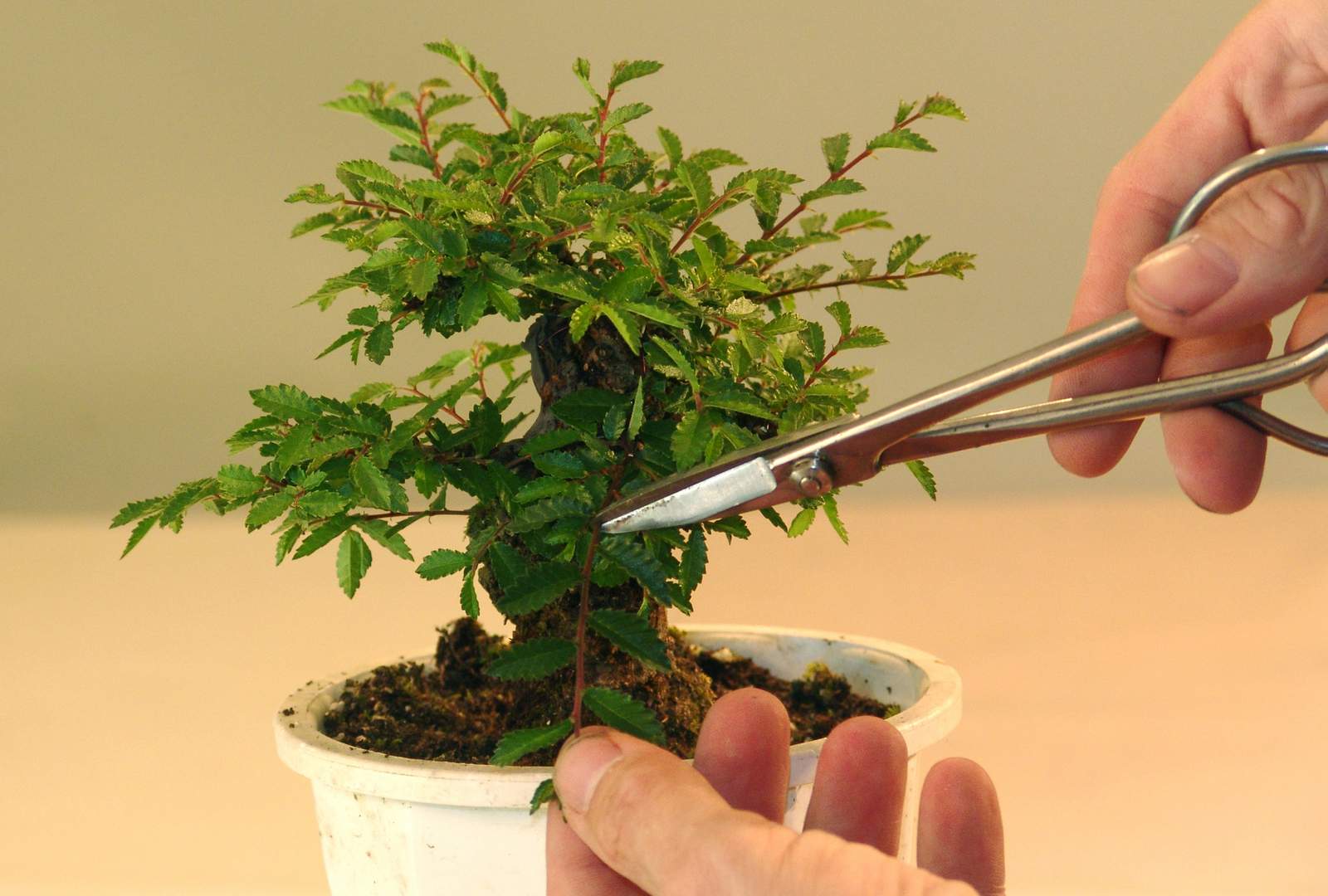
Just a good month after the first pruning the tree has set a good portion of new growth. I said it was tolerant.
New growth is cut back to divide the branches when they react to the pruning. Also here is a mistake. At that time I should have let two lower branches grow freely so they could thicken properly, and be good first branches.
But you learn by mistakes, and I did manage to correct this later.
One year later it is time for transplanting. Roots are pruned lightly to promote new growth.
A big enough training pot gives room for root growth and speeds up the general growth.
A training pot doesn’t need to be expensive. The purpose is just for training the tree and not displaying.
2014
Again mosses have attached themselves to the tree and the toothbrush must do its work.
Branches have developed nicely over time, and the trunk has gained a much more interesting form.
2016
The branch structure is getting better. I have wasted some time growing the lower branches thicker by letting them grow freely for a period, but that is a learning experience for the next one.
Here is an early winter image still showing some leaves that haven’t gone yet. A new pot is also present.
2017
Summer image in all its glory.
Winter work. Rearranging some branches. This is best done in the dormant period when leaves are not covering the view.
2017 summer
The pot is from Walsall Ceramics in the UK. A bold pot in a challenging colour. Not to be liked by all but I find it great with the fresh green leaves in summer, and also has a good effect in winter with the silhouette of branches.
